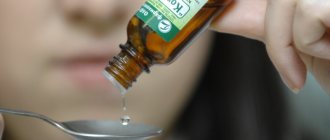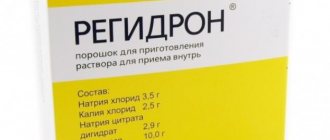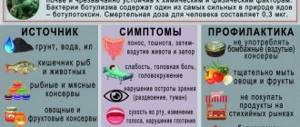Arsenic has been known since ancient times; the Romans and Greeks used it as a poison, and in Eastern medicine it was used to treat syphilis. The Latin name is Arsenicum, which means male, because the ancient alchemists considered it the “male” element.
It is widespread in nature in combination with metals in the composition of pyrites, various ores and minerals, and is found in polluted water, air, and seafood. Arsenic compounds are used in metallurgy, leather, paint and varnish, glass industries, electronics, agriculture, and medicine.
The effect of arsenic on the human body
Arsenic is a semimetal, very active, capable of forming various chemical compounds. In its pure form, it resembles a gray-silver metal, very fragile, easily crumbles, melts when heated, changes color and gives off vapors with a garlicky odor.
The effect of arsenic on the body is based on its interaction with a number of microelements - phosphorus, sulfur, selenium and other substances. Binding with metals leads to their deficiency in the body, and these compounds themselves are toxic. As a result, all organs and systems suffer:
- Nervous system and sensory organs : headache, dizziness, impaired memory, speech, orientation, sensitivity appear, muscle atrophy occurs, a stroke may develop;
- Heart and blood vessels : blood pressure decreases, heart rhythm is disturbed, peripheral vessels are damaged, which leads to thrombosis and the development of gangrene;
- Respiratory system : bronchospasm, pulmonary edema occurs, and with prolonged exposure to small doses, lung cancer develops;
- Digestive system : swallowing is impaired, vomiting, diarrhea occurs, the liver enlarges, hepatitis, cirrhosis develops;
- Urinary system : the capillaries of the kidneys are affected, protein appears in the urine, the excretory function of the kidneys is impaired, and renal failure develops;
- Skin and mucous membranes : areas of pigmentation and thickening of the epidermis, ulceration of the skin and mucous membranes, areas of necrosis appear, rhinitis, stomatitis, and conjunctivitis develop.
How can you get poisoned by arsenic?
Due to the widespread occurrence of this metal in nature, the environment, and in various industries, there are many ways of poisoning with this poison:
- Inhalation of toxic vapors;
- Eating foods treated with herbicides;
- Drinking untreated water;
- Excessive consumption of seafood (shrimp, oysters, mussels);
- Violation of safety precautions when working with alloys, paints and other toxic substances;
- Exceeding the dose of medications containing arsenic (novarsenol, aminarsone, miarsenol and others);
- Intentional poisoning in an attempt to kill or for suicidal purposes.
Arsenic can enter the body in 3 ways : through the lungs by inhaling vapors, through the digestive tract, through the skin and mucous membranes.
Questions are often asked: is it possible to get poisoned by a temporary filling that the dentist puts in to “kill” the nerve? Poisoning is unlikely, because a tiny dose of a toxic substance is applied, and after 2 days the seal is removed. If it remains in the tooth for a longer time, then not only the nerve, but also the tooth itself is destroyed, and stomatitis may develop.
Modern dental offices are abandoning the use of arsenic, replacing it with new, safer agents.
Contraindications
The following conditions are contraindications for the use of arsenic-based drugs:
- children's age up to 1.5 years;
- allergy to arsenic and its components;
- lack of fully formed roots or reabsorbing roots;
- when it is impossible to completely clean the canals (their curvature, fusion, blocking with tartar);
- artificial hole in the root (disconnection or perforation);
- high eye pressure (threat of glaucoma);
- not completely sanitized and cleaned channels;
- diseases of the urinary organs;
- state of pregnancy or breastfeeding.
The use of arsenic paste is not allowed for pregnant women and nursing mothers. In these situations, even the minimum content of poison can be unpredictable and toxic for the child’s body.
The use of arsenic is also undesirable for children. They often break the temporary filling themselves, and the toxic medicine enters the body. This can cause intoxication of the delicate child's body.
Arsenic is still commonly used by dentists. And its use can be very justified. An experienced doctor using this medicine has successfully relieved hundreds of patients from unbearable pain. The main thing is to cure the tooth without unnecessary suffering and not spoil your health. Take care of yourself and smile more often!
Symptoms of poisoning
Arsenic poisoning can be acute, with a single large dose entering the body, and chronic, with prolonged exposure to small doses.
Symptoms of arsenic poisoning in humans in acute form:
- Sharp general weakness;
- Characteristic garlic odor from the mouth;
- Headache, dizziness, disorientation, mental disorders;
- Palpitations, low blood pressure;
- Difficulty breathing, bronchospasm, cough;
- Yellowness of the skin;
- Dark colored urine, blood in the urine;
- Metallic taste in the mouth, nausea, vomiting mixed with blood , frequent bowel movements, cramping abdominal pain.
Chronic intoxication is typical for people whose work involves metal. In the first month of arsenic poisoning, such a person develops signs of general malaise, nausea, poor appetite, and frequent stomach upsets. After 1-1.5 months, areas of inflammation and pigmentation appear in various areas of the body, thickening of the outer layer of skin with peeling and detachment of the horny plates. The nails become thinner and become striated with transverse white stripes. Skin cancer often develops in areas of keratinization.
First aid and treatment
In case of acute arsenic poisoning, the victim should immediately call an ambulance and begin first aid.
First aid depends on the severity of the condition:
- If a person is unconscious, but the pulse and breathing are preserved, it is necessary to lay him on his side and provide access to fresh air;
- If the pulse cannot be felt and there are no respiratory movements, it is necessary to carry out resuscitation measures - closed cardiac massage and artificial respiration;
- When the victim is conscious, you need to immediately rinse his stomach with a weak saline solution (2 teaspoons per 1 liter of water), then give him a little drink - often and in small portions, you can give activated carbon or any other sorbent;
- If the substance gets on the skin and mucous membranes, rinse your mouth, nose with water, and wash your skin with soap and water and a sponge.
What is arsenic and where is it used?
Arsenic, also known as Arsenicum in Latin, is an element of the periodic table, a semimetal. Despite the fact that it is a strong poison for the human body, arsenic also has beneficial properties, which makes it indispensable in various fields:
- agriculture (pesticides),
- deratization and disinfestation (the element is included in many pest control products),
- production of semiconductors and electronics,
- glass industry,
- metallurgy (to impart strength to alloys and increase their anti-corrosion resistance),
- woodworking (for impregnation of wooden products),
- leather and fur industry (as an antiseptic for products),
- medicine (in particular dentistry).
In nature, Arsenicum is present in certain quantities in ore deposits, mountain and earth layers, from where it can be washed out with rain into nearby bodies of water. And when using such water, poisoning is very likely. But this is not the only situation in which arsenic can cause poisoning.
Consequences and complications, is death possible?
Severe arsenic poisoning always leaves its mark on the body, even after professional and long-term treatment. There is a high probability of developing consequences:
- Disruption of the functioning of internal organs (heart, lungs, liver, kidneys, spleen, hematopoietic system);
- Damage to the nervous system – encephalopathy, which manifests itself as severe headaches, polyneuritis, impaired cognitive functions of the brain (memory, attention, perception, speech, orientation);
- Hematopoietic disorders, development of leukemia;
- Development of cancer of the skin and mucous membranes, lungs.
These disorders in the body often lead to disability and sometimes death.
Chronic long-term poisoning can also lead to death due to the progressive deterioration of various body functions; the person gradually “melts,” loses strength, and weakens. This is exactly how in the Middle Ages this substance was used to kill unwanted people, spouses, by mixing a small dose into food every day.
What happens if you swallow arsenic from your tooth?
There is a myth that if you swallow a fallen temporary filling containing arsenic, you can be poisoned. There is no need to be afraid of this, because the dose in this case is negligible, and it is not capable of causing poisoning, whether it is swallowed by an adult or a child.
If poisoning does occur, you can drink any of the sorbents - activated carbon, phosphalugel, Polysorb, Rehydron, cleanse the intestines with a laxative or enema. You also need to increase the amount of fluid per day, drink mineral water, green and herbal tea with lemon, and sour juices. Under no circumstances should you drink alcohol.
All these activities can be done at home, without going to the doctor, just to be on the safe side. It is much more dangerous not to swallow the filling, but to leave it for a long time, believing that the longer it is in the tooth, the less painful subsequent treatment will be. It's a delusion. The nerve is destroyed within 2 days, and subsequently the tissue of the tooth, cell, gum, and toxic stomatitis may develop.
Arsenic is a toxic and deadly element. You can avoid getting it into the body by following the rules of hygiene and healthy eating, and safety precautions at work. If poisoning occurs, you must immediately go to the emergency room and take measures to provide first aid.
Victor Systemov – expert of the 1Travmpunkt website
Recently I had a tooth treated using arsenic. To be honest, I'm worried. After all, this seems like a dangerous substance. What happens if you swallow arsenic?
Arsenic penetrates the skin quite quickly. It negatively affects the gastrointestinal tract and lung function. Arsine gas is considered the most dangerous. It is called arsenic hydrogen. In its pure form, this substance has no odor. Before use, arsine is mixed with a special admixture. As a result, the substance smells like garlic. Within 24 hours after any type of arsenic enters the body, damage to all internal organs occurs. After just 2 weeks, traces of arsenic are found in the skin, bones, nails and hair. This substance takes a long time to be eliminated from the body. Only 7% of arsenic is excreted in feces. Urine removes 93% of this substance. But despite this, even after 10 days traces of arsenic are found in the body. Despite the route of penetration, such a substance penetrates the blood, forming a strong bond with hemoglobin. It quickly reaches all organs through the blood vessels and also affects the tissues of the nervous system. Arsenic provokes disruption of the biochemistry of cellular respiration. A lethal dose is considered to be 50-340 mg of this substance. In this case, an important role is played by the weight of the person and his state of health. The acute form of poisoning is manifested by a metallic taste in the mouth, burning and spasms of the larynx. Blood pressure drops sharply, the skin turns blue, the sclera of the eyes and palms turn yellow, and dizziness occurs. Then acute liver and kidney failure develops. The stomach hurts a lot, uncontrollable diarrhea appears, which quickly removes fluid from the body. This causes dehydration. In severe cases, swelling or spasm of the lungs, loss of consciousness, paralysis, and coma may occur. Of course, such symptoms cannot be ignored, otherwise there is a high probability of a whole list of negative reactions from the body. Even death cannot be ruled out. At the first signs of poisoning, it is advisable to call an ambulance.
If there is no other choice
After placing arsenic in the tooth cavity, the doctor sets a date for the next visit - the day on which it will be removed. Moreover, it is not recommended to postpone the appointed date to a later date, even if the tooth has stopped hurting. This will lead to unnecessary ones.
Arsenic in its pure form is never used in dentistry. That is, the kind that is used to poison rodents. In order to gradually and practically painlessly kill the nerve in which the inflammatory process began, a special paste is placed into the tooth. This product contains a very small dose of arsenic. It is not capable of harming a person’s life or health.
Even if the temporary filling suddenly falls out and you swallow some part of the paste, your body should not be harmed. You can be poisoned by arsenic only if a significant dose of this poison enters the body. Penetrating the digestive tract with saliva, it settles in the kidneys, spleen, liver and intestinal mucosa.
Subsequently, nausea, indigestion, the urge to vomit, and a sharp metallic taste occurs in the mouth. To neutralize the effects of arsenic at home, you need to drink milk. This is in case it is not possible to see a doctor. Serious negative consequences of using arsenic in dentistry.
What is arsenic used for?
Arsenic is a chemical substance that is classified as a semimetal. It occurs in its natural form as a mineral, but chemical plants are able to reproduce it in the required quantities. Many centuries ago, it was used by famous alchemists when melting gold bars. The powder is absolutely tasteless and dissolves in liquids. Many schoolchildren know what arsenic smells like: it has a pronounced hint of garlic.
In industry, the substance is used in the production of a number of products:
- compositions for dubbing natural leather;
- fireworks;
- some paints and varnishes;
- herbicides.
In dental practice, for many years in a row, arsenic has been used to remove nerve endings in teeth. When the dose is taken correctly, the substance is safe for humans and the environment, and helps get rid of dangerous rodents and insects.
Maintaining the integrity of the temporary filling
Preserving the integrity of the filling for the period while arsenic is in the tooth is an extremely important condition. Moreover, both the doctor and the patient are obliged to comply with it.
The dentist tries to mix the temporary filling in such a way that it ensures complete sealing of the tooth and prevents the drug from leaking into the oral cavity. It is also important that the arsenic does not come into contact with the tissues surrounding the tooth, such as the gum.
But excessive compaction of the temporary filling should not be allowed - strong pressure is created on the tooth pulp, and the patient may experience pain.
In addition, a very dense temporary filling is difficult to remove from the tooth. This point should be taken into account so that if the patient develops intense pain, the patient can independently remove the filling and arsenic.
Causes of intoxication
Arsenic poisoning of animals and people is often observed when the rules of caution are not observed. Contact occurs in several ways:
- orally;
- inhalation of powder;
- absorption by the epidermis.
The chemical is dangerous to store at home: the taste of arsenic is so neutral that it can easily be mistaken for starch or accidentally added to food. More common ways of contact with a dangerous trace element:
- Drinking contaminated water. It is washed out of rocks and ends up in drinking water from wells and running streams.
- Improper use of herbicides, uncontrolled aerial spraying over populated areas.
- Inhalation of toxic fumes when disposing of materials containing arsenic particles.
- When working with semiconductors, soldering some electronic boards.
Arsenic poisoning can occur in humans through consumption of fish and other seafood caught in contaminated areas. Mollusks absorb large amounts of toxic substances and store them in soft tissues. Often patients are admitted to the hospital who deliberately took poison with the intention of committing suicide. Sometimes intoxication becomes a consequence of a violation of safety regulations at work.
A less common option is arsenic poisoning during dental treatment. A special paste based on it is placed into the open tooth and closed with a temporary filling. The substance promotes the death of the affected nerve in the pulp and protects against bacterial inflammation. In case of an overdose or damage to the cement, part of the poison gets onto the gums and into the stomach with saliva when swallowing.
Deadlines
Long-term presence of the medicine in the tooth leads to the fact that arsenic penetrates into the environment.
I know, I'm SSZB. But I did it by accident. Yesterday I had my wisdom tooth removed. It was very difficult to remove with sawing and crushing. . (I had it removed at the state clinic on Shartashskaya) today I was treated and bandaged. The doctor put gauze or something with arsenic in the wound. I accidentally swallowed it at dinner. So what's now? What could be the consequences?
none. the dose is non-lethal. drink coal. Well, go to the doctor again.
Everything will be fine











